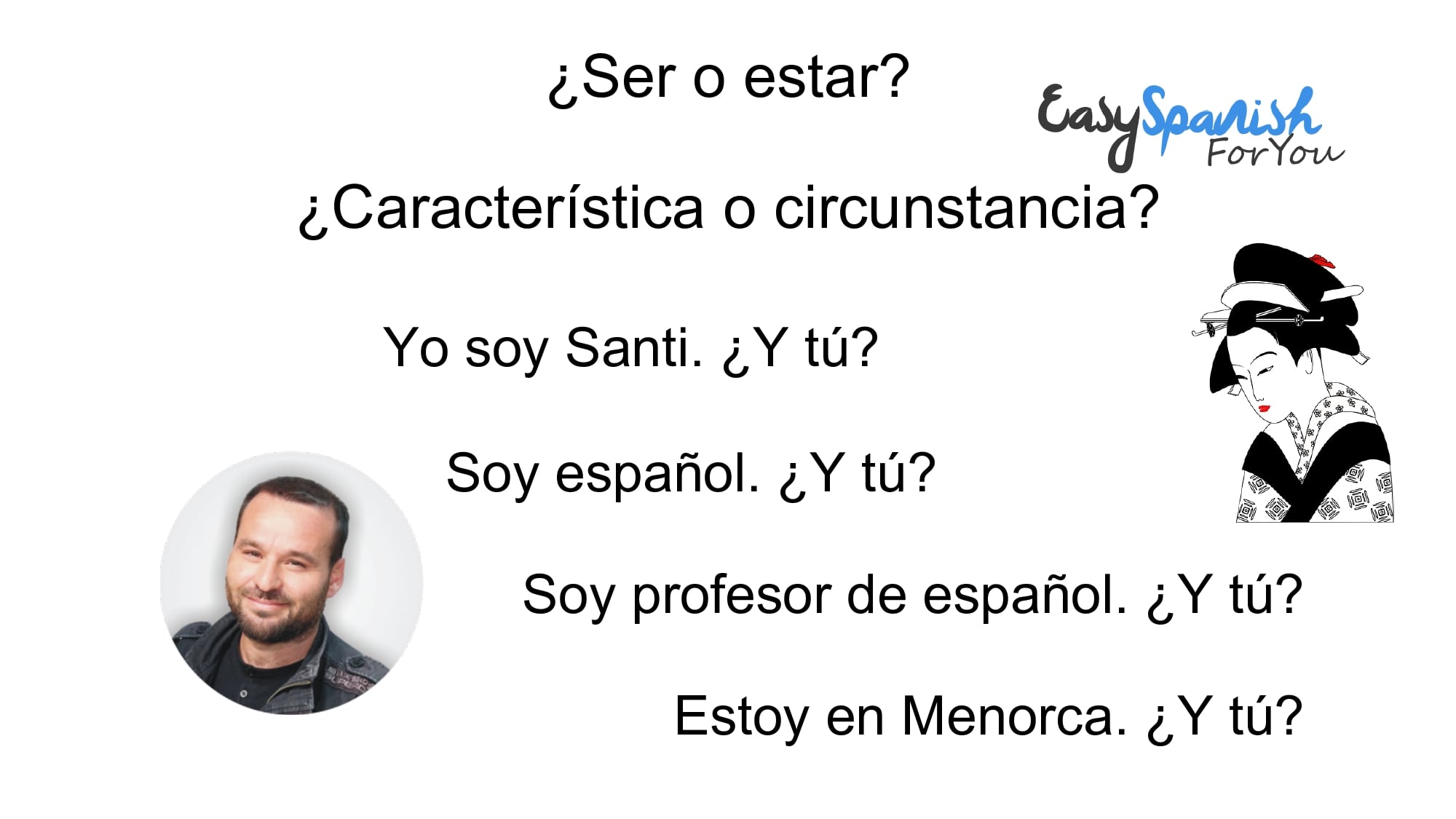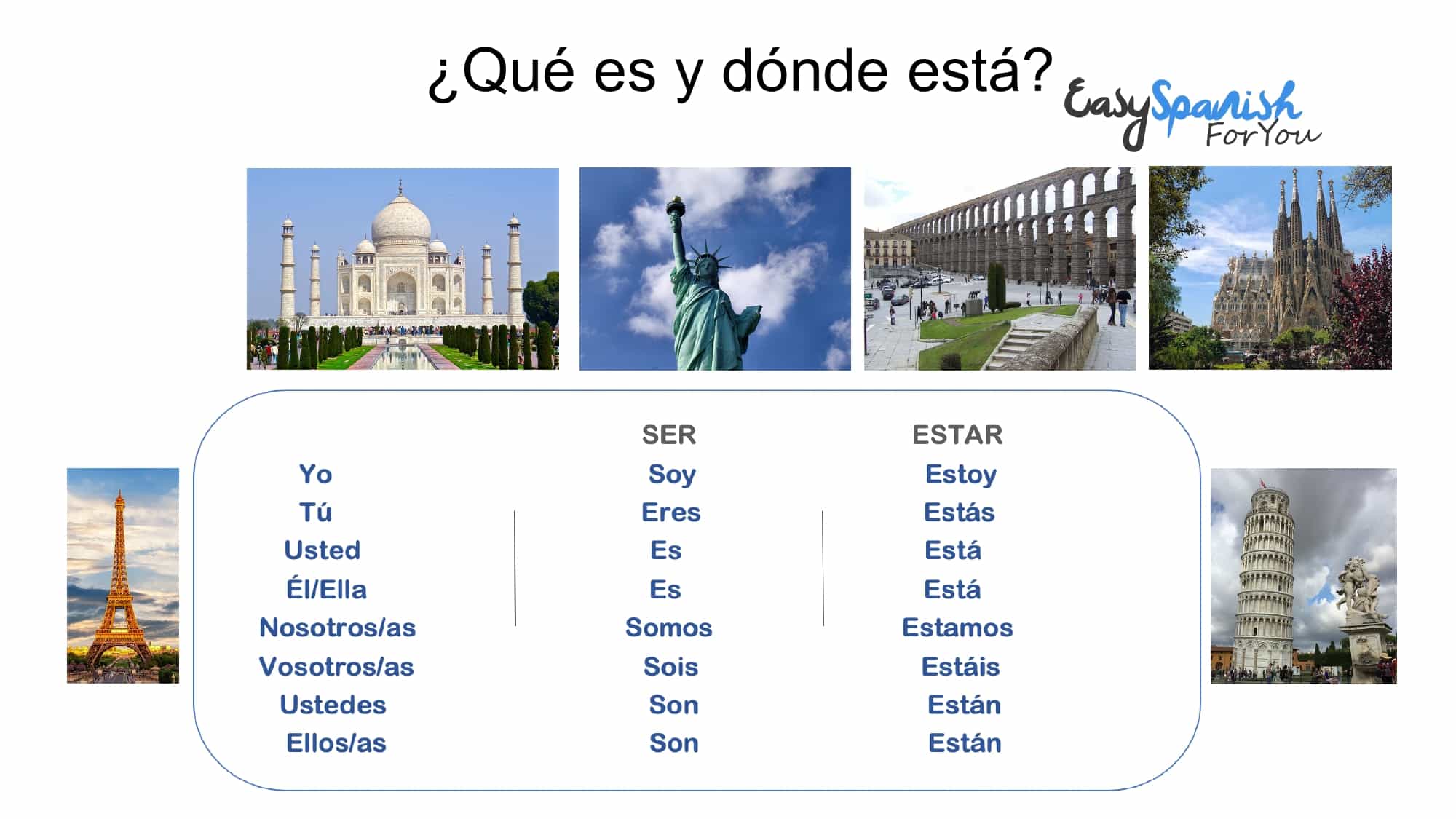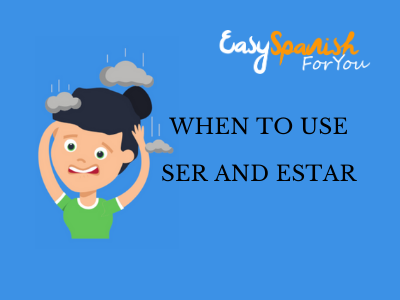Learn, once and for all, when to use Ser and Estar.
As a Spanish online tutor for beginners I’m well aware of which are the main struggles for my students.
And one of those pain points is to know when to use Ser and Estar.
This is especially hard for English speakers since in English both words can be translated with the verb “To be”.
I know this can be a bit frustrating since you want to speak good Spanish and you don’t want people to correct you all the time… “Está bueno, no es Bueno”…
In this post I’m going to give you THE ultimate tip so you will always know when to use one or the other.
It works in 99% of the cases! Great, isn’t it?
Don’t complain! If you’re wrong only 1% of the time it is already a huge progress, don’t you think?
I will give you some examples as well so you understand it easily.
Is it a Characteristic or a Circumstance?
This is basically the question that you need to ask yourself before using Ser or Estar.
If what you are going to say is a characteristic you’ll use Ser but if it’s a circumstance you use Estar.
Got it? Ok that’s it. Thanks for reading.
No, I’m joking, let’s see some examples so you get this clear for once and for all in your mind.
Answer this question, being blonde is a characteristic or a circumstance?
Exactly, it’s a characteristic you use to describe someone.
“My girlfriend is blonde” – “Mi novia es rubia”
But if you are explaining to your friend that your girlfriend is angry at you, what would you think being angry is, a characteristic or a circumstance?
I hope you have answered circumstance because if you said it’s a characteristic that would mean she is always angry and then you might as well start looking somewhere else ?
So because being angry is a circumstance we say in Spanish “Mi novia está enfadada”.
Is it now a bit more clear?

Let’s see another example, just in case.
Imagine you just tried a paella and you think it’s delicious so you want to say it to your friend who cooked it for you (Oh, you don’t have a friend who can make paella? Oh poor you… But ok, imagine that).
What would you say being delicious is, a characteristic or a circumstance?
I know you would think it is a characteristic but we Spaniards think that cooking something which is delicious is a circumstance because it could have been a disaster!
Imagine you put too much salt or you put chorizo! in your paella, that would be a catastrophe!
So, sorry to say, but in this case (and always when we talk about food) we use estar.
“This paella is delicious” – “Esta paella está muy rica”
Check this picture:

I’m Spanish and I’m in Menorca.
Being Spanish is a characteristic but being in Menorca is a circumstance because I could be in Inverness freezing my b….
Let’s practice a bit more with the next exercise.
The first picture is the Taj Mahal and is in India – Es el Taj Mahal y está en India.
You do the rest. Come on, don’t be lazy!

Ok now that you have practiced a bit and have a much better idea of how to use each of them, let’s complicate things and jump into the next level.
Ready for the challenge? Don’t be a shy…
There are some adjectives that change their meaning whenever you use them with Ser or Estar.
Let’s see one very easy example.
You meet a sexy Spanish man and you want to describe him to your friends.
If you say “Javi es muy bueno” you mean that he is very good at heart.
But if you say “Javi está muy bueno” you mean that he is super sexy.
Now that I think about it, we probably use estar when we talk about the level of sexiness of someone because we compare them with food, basically we want to express how tasty they are (or we think they should be looking at their appearance)
Here is a list with some of the most used adjectives that will change their meaning depending on whether you use them with “Ser” or “Estar”
I hope I have helped you understand a bit better when you need to use Ser or Estar in a conversation.
Don’t worry if you make mistakes at the beginning, the good news is that with time and practice you’ll get there and it will come to you naturally.
Your Spanish tutor should make you practise with Ser or Estar a lot so you’ll get it without problems.
Trouble finding a Spanish tutor?
Read my post on How to find a Good Spanish Tutor.
If you want to practise your conversation skills you can join my online conversation group.
Each group has 4 students maximum and I make sure everyone has his/her turn to speak.
A conversation group is the ideal way of practising your Spanish and make sure you don’t forget what you learnt.
We talk about very different subjects, also about Spanish culture and current affairs.






